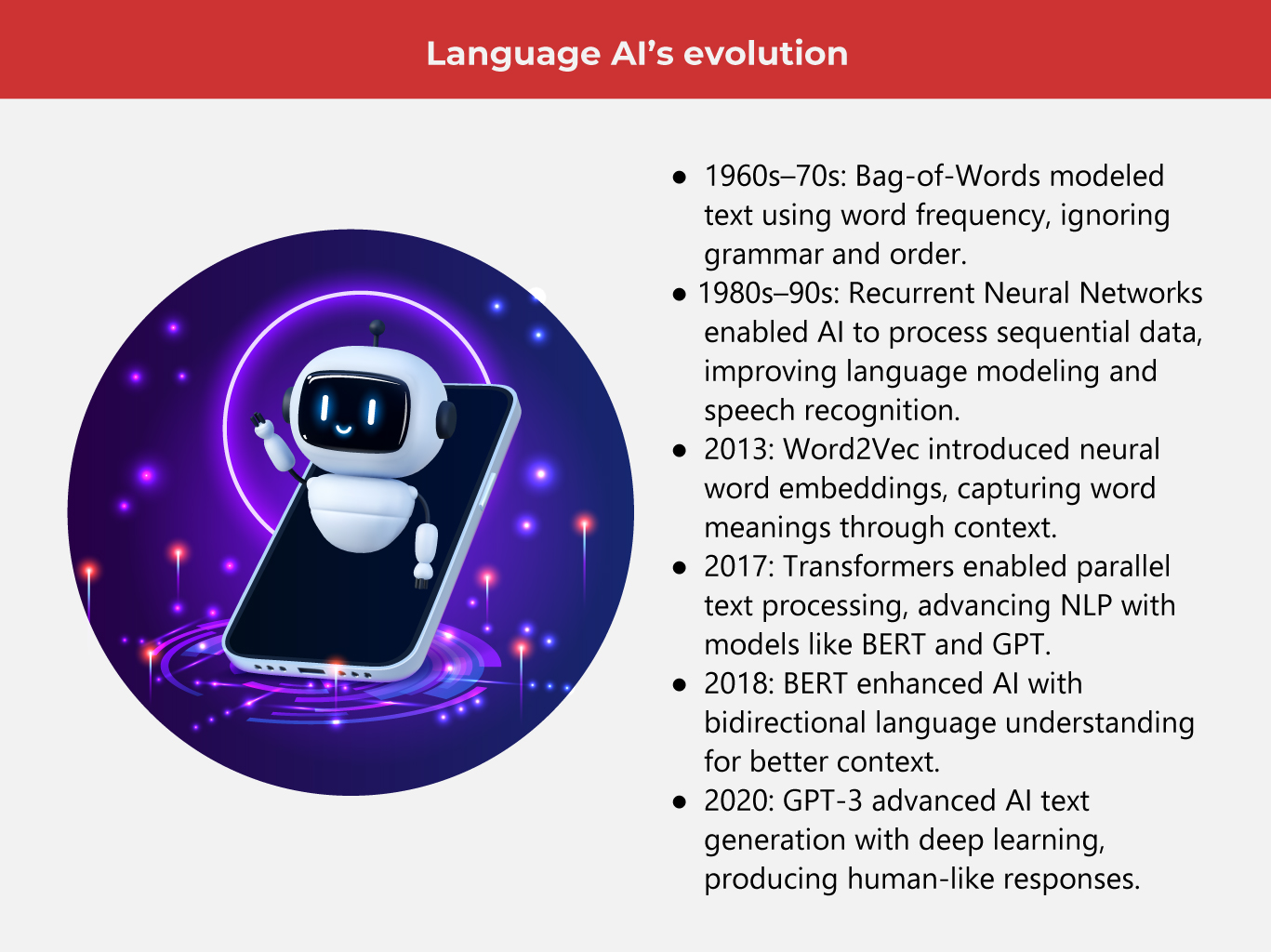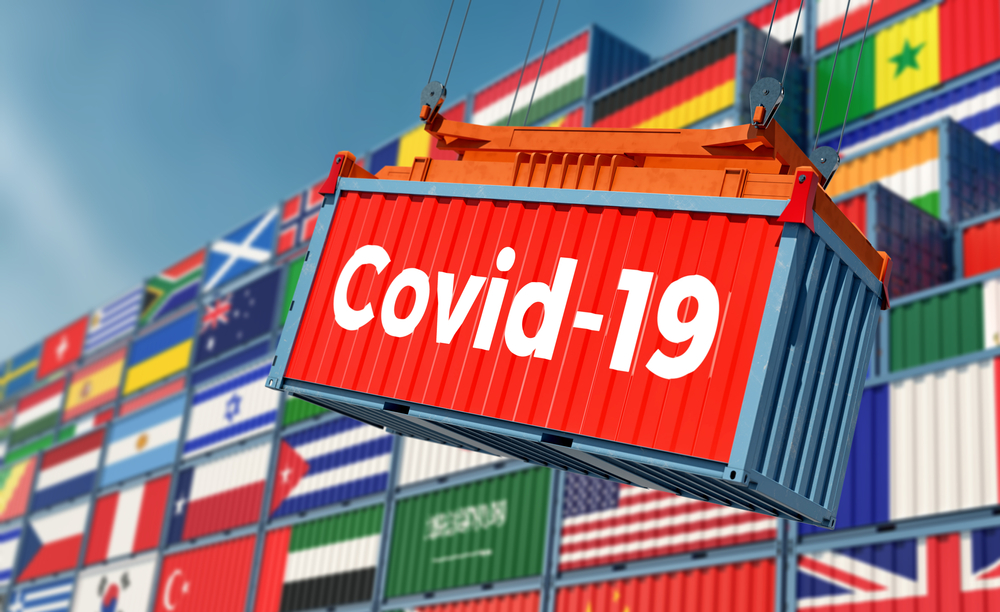8 Reasons Why You Should Use AI for Improving Factories

Artificial intelligence (AI) has shaped manufacturing since the 1980s, originally automating tasks like robotic sorting, equipment upkeep, and inventory control. While these applications continue, AI's influence remains strong, ranking as the second most cited factor in building production strategies to achieve manufacturing excellence.
Manufacturers constantly deal with ever-evolving challenges, from supply chain management to complying with strict regulations. However, clear communication remains the foundation of improving operational efficiency—something Language AI can help improve.
The consequences of ineffective communication include wasted time, financial losses, and damage to reputation—leading to slower issue resolution, production setbacks, and quality concerns. Meanwhile, strong communication keeps teams efficient, upholds standards, ensures safety, and enhances productivity.
(Also read: The Latest News on Smart Factories)
What is Language AI?
Language AI is a branch of artificial intelligence that enables machines to comprehend, process, and generate human language. Often associated with natural language processing (NLP), it plays a crucial role in bridging the gap between human communication and machine understanding. By analyzing text and speech, Language AI allows computers to interact with people more intuitively, providing industrial solutions.
This technology spans a broad spectrum, from simple keyword detection in search engines to sophisticated language generation models that can craft human-like responses. Language AI powers virtual assistants, chatbots, translation services, and content creation tools. While large language models (LLMs) like GPT have gained attention for their immense data-processing abilities, Language AI is not limited to just large-scale models—many smaller yet impactful models contribute to advancements in the field.
The influence of Language AI is growing across manufacturing markets and industries, from customer service automation to real-time transcription and sentiment analysis. As AI continues to evolve, so will its ability to understand context, emotions, and even cultural nuances, making interactions with machines more seamless and human-like.

(Also read: Top Tech Tools to Take Your Manufacturing to the Next Level)
8 ways language AI boosts manufacturing efficiency
Language AI helps manufacturers improve communication and efficiency through secure, industry-specific system integration.
-
Smooth collaboration
Manufacturers can use Language AI to enhance communication, ensuring strong collaboration in different processes, including product design and development. By reducing misunderstandings and improving clarity, it streamlines operations and strengthens teams. Secure, AI-driven solution boosts efficiency, improves coordination, and creates a more connected workflow, helping manufacturers optimize communication and drive innovation throughout production.
-
Fast language translation
By automatically translating internal system interfaces like Customer Relationship Management (CRM) and Enterprise Resource Planning (ERP) systems, Language AI maximizes manufacturing operations, improving everything from design to engineering capabilities. This enables employees and partners to work more efficiently in their native languages. Transformer-based models ensure accurate translations that consider context and sector-specific terminology, supporting real-time communication and global collaboration.
-
Efficient production
Technical documents, manuals, and specifications are accurately translated by Language AI, ensuring clear communication across the logistics network. This reduces errors and misinterpretations in production. Through precise multilingual understanding, language AI helps manufacturers maintain quality and ensure precision and consistency in crucial processes like product validations and testing solutions.
-
Accurate technical reports
In preparing technical reports, AI streamlines data extraction, standardizes formatting and ensures accuracy. It automates translation, reduces human errors, and enhances clarity, making reports more reliable. By optimizing documentation, AI accelerates decision-making, improves compliance, and supports solid communication across teams.
-
Enhanced customer service
Chatbots and virtual assistants improve customer service by handling inquiries, scheduling, and supporting tasks. Powered by language AI, they understand context, provide error-free responses, and facilitate multilingual communication. This reduces the workload for support teams, enhances response times, and ensures productive interactions, making customer service more reliable and accessible.
-
Gathering feedback
Advanced models like BERT enhance feedback gathering in manufacturing by analyzing customer reviews and classifying sentiment as positive, negative, or neutral. This allows businesses to gauge satisfaction, identify trends, and address concerns efficiently. By leveraging Language AI, manufacturers gain valuable insights, improve products, and maintain a customer-focused approach for continuous improvement.
-
Customization
Software customization in manufacturing is boosted by Language AI, which generates code snippets from descriptions to assist developers. Using specialized models trained in programming languages, it automates coding tasks, streamlines modifications, and ensures precise implementation of custom features. This reduces development time, improves efficiency, and delivers highly tailored manufacturing solutions with greater precision.
-
Sustainability
Eco-friendly practices in manufacturing benefit from language AI by streamlining supply chain coordination and minimizing delays and waste. AI-driven analysis helps interpret sustainability regulations, ensuring compliance. Automating documentation and reducing paper use supports greener operations. Additionally, language AI identifies inefficiencies through NLP, enabling smarter resource management and lowering emissions.
Ethical concerns
The widespread use of language AI raises important questions about these issues:
-
Ensuring fairness
Biases from its training data can shape language AI, leading to skewed or unfair outcomes. To counter this, developers must implement bias detection tools, diversify datasets, and continuously refine models to promote ethical and balanced decision-making.
-
Transparency in AI interaction
Users may not always realize they’re engaging with AI, raising concerns about trust and informed decision-making. Clear disclosure, explainable models, and transparent design help ensure accountability, fostering responsible AI integration into society.
-
Preventing misinformation
Language AI can unintentionally produce misleading or harmful content, posing risks to users. Implementing content moderation, setting strict usage policies, and refining algorithms help minimize inaccuracies.
-
Protecting user data
Managing sensitive information requires strict safeguards to prevent misuse. Anonymizing data, enforcing encryption, and following regulations like controlling data collection and processing help ensure cybersecurity and ethical AI practices.
The road ahead
The future of language AI promises innovation and refinement. Multimodal systems will blend text, visuals, and sound for deeper engagement. Enhanced personalization will cater to users while safeguarding privacy. Meanwhile, smarter, resource-efficient models will boost performance, making AI more accessible and sustainable across various applications.
As one of the Top 20 EMS companies in the world, IMI has over 40 years of experience in providing electronics manufacturing and technology solutions.
We are ready to support your business on a global scale.
Our proven technical expertise, worldwide reach, and vast experience in high-growth and emerging markets make us the ideal global manufacturing solutions partner.
Let's work together to build our future today.
Other Blog



